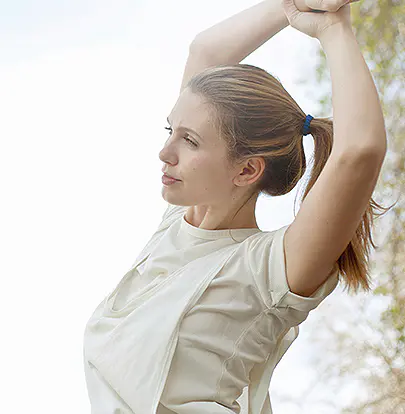Summary:
Blended fabrics, which are composed of two or more different types of fibers, offer a range of advantages over single-f...
Blended fabrics, which are composed of two or more different types of fibers, offer a range of advantages over single-fiber fabrics in terms of both comfort and durability. These advantages stem from the unique combination of properties that each type of fiber brings to the blend. Blending different fibers allows manufacturers to create textiles that balance the strengths and weaknesses of individual fibers, resulting in fabrics that excel in various aspects.
Comfort Advantages:
Softness and Texture: Blending different fibers can result in fabrics that are softer to the touch. For instance, the inclusion of natural fibers like cotton or modal can add a luxurious and gentle feel to the fabric, making it more comfortable against the skin.
Breathability: Blended fabrics can be engineered to enhance breathability by combining fibers with different moisture-absorption properties. For instance, mixing moisture-wicking synthetic fibers like polyester with natural fibers like cotton can create a fabric that effectively wicks away sweat while allowing air to circulate, enhancing overall comfort, especially in active wear.
Temperature Regulation: By combining fibers with different insulating properties, blended fabrics can help regulate body temperature. For example, blending wool, known for its warmth, with a moisture-wicking fiber can result in a fabric that keeps the wearer warm in cold conditions while preventing overheating.
Reduced Wrinkling: Blended fabrics often have improved wrinkle resistance compared to single-fiber fabrics. Synthetic fibers like polyester are known for their wrinkle-resistant properties, which can be blended with natural fibers to create fabrics that retain their smooth appearance even after extended wear.

Durability Advantages:
Strength and Durability: Combining fibers with varying strengths can result in a fabric that is more durable and resistant to wear and tear. Synthetic fibers like nylon are known for their high strength, and when blended with natural fibers like cotton, they can enhance the fabric's overall durability.
Pilling Resistance: Pilling, the formation of small balls of fiber on the fabric's surface, can be reduced in
blended fabrics. By incorporating fibers that are less prone to pilling, such as acrylic or polyester, manufacturers can increase the fabric's lifespan and maintain its aesthetic appeal.
Shrinkage Control: Blending fibers with different shrinkage tendencies can help control the fabric's overall shrinkage behavior. For instance, if a natural fiber like wool is blended with a synthetic fiber, the fabric may be less prone to significant shrinkage when exposed to moisture or heat.
Color Retention: Blended fabrics often show improved color retention over time. Certain synthetic fibers have better colorfastness properties, meaning they are less likely to fade when exposed to sunlight or frequent washing. Blending these fibers with others can help preserve the fabric's vibrant colors.
Elasticity and Stretch: Blending elastic fibers like spandex or elastane with other fibers can enhance the fabric's elasticity and stretch recovery. This is especially beneficial for sportswear and activewear, as well as garments that require a close, comfortable fit.
In summary, the advantages of using blended fabrics over single-fiber fabrics in terms of comfort and durability are numerous and diverse. These fabrics offer a harmonious combination of properties that cater to the needs of modern consumers. Blended fabrics provide enhanced softness, breathability, temperature regulation, and reduced wrinkling for improved comfort. On the durability front, they offer increased strength, pilling resistance, shrinkage control, color retention, and elasticity. By harnessing the strengths of different fibers, blended fabrics present an innovative approach to textile production that aims to provide superior performance while meeting the demands of various applications, from everyday clothing to specialized industrial uses.
 0571-82995618
0571-82995618 [email protected]
[email protected]
